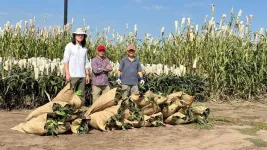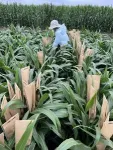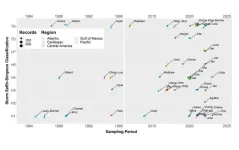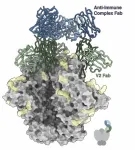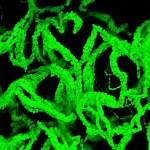(Press-News.org) Researchers at the Center for Advanced Bioenergy and Bioproducts Innovation (CABBI) have developed a new sorghum variant that can outperform soybeans in oil production, with great potential as a clean source of renewable fuel.
Scientists have long worked to create new sustainable sources of vegetable oils, known as triacylglycerols (TAG), to meet the growing demand for renewable fuels like sustainable aviation fuel (SAF) and renewable diesel.
Currently, oil palm and oilseeds such as soybeans provide most TAG for renewable fuels, but these sources alone cannot meet future global needs. To address this, researchers have been engineering high-biomass grasses like sorghum to produce oil. These grasses are highly efficient at photosynthesis, produce large amounts of biomass, and can grow in tough climates, making them excellent candidates.
In their new study, published in Plant Biotechnology Journal, CABBI scientists highlight the utility of a lab-to-field pipeline to deliver sorghum that’s high in TAG. Researchers engineered sorghum to accumulate up to 5.5% dry weight TAG in its leaves and 3.5% dry weight in its stems under field conditions — 78 times and 58 times more than unmodified sorghum, respectively. This level of production could provide about 1.4 times more oil per hectare than soybeans, making this a promising new feedstock for renewable fuels.
“This work is the culmination of a large team effort that demonstrates how fundamental research can be used to develop new crop feedstocks to address global energy demands,” said Edgar Cahoon, Director of the Center for Plant Science Innovation at University of Nebraska and one of the corresponding authors on the paper. Cahoon worked with Kiyoul Park, Senior Research Associate in the Department of Biochemistry at University of Nebraska and lead author on the paper; and Tom Clemente, Eugene W. Price Distinguished Professor of Biotechnology at the University of Nebraska; along with many other CABBI experts.
In contrast to oil-rich seeds and fruit from plants like oil palm and soybean, TAG typically only accumulates in a plant’s vegetative organs (leaves and stems) as a stress response to membrane damage.
To design sorghum for vegetative oil accumulation, the researchers used a “push-pull-protect” strategy, which CABBI researchers have previously used to increase vegetative oil accumulation in other plants. They introduced genes to “push” more carbon from photosynthesis into oil production, “pull” fatty acids into TAG molecules, and “protect” the stored oil from breaking down. This approach built on previous successes with other crops, focusing in on sorghum for its heat and drought tolerance and well-understood genome.
By using advanced gene transfer methods, CABBI scientists engineered sorghum lines that, when grown in the field at the Eastern Nebraska Research, Extension, and Education Center, not only maintained stable oil production over multiple generations, but also avoided the biomass reductions seen in similar studies with other biomass crops.
“The breadth of expertise in CABBI has allowed us to take a concept from the lab and put it to practice for field production of a new bioenergy and bioproduct feedstock,” Cahoon said.
These newly engineered oil sorghum lines provide potential new sources of feedstocks for renewable diesel and SAF, reducing reliance on traditional oil crops while meeting the growing demand for renewable energy. And this oil sorghum also has the potential to provide new income streams and markets for farmers. Oil sorghum bioprocessing opens up new ways to spur the bioeconomy and support rural vitality.
The research team will continue to study how to further increase oil yields to meet CABBI’s goal of growing crops that are 10% TAG by dry weight.
“The basis for further improvement of TAG yields will depend on in-depth analysis of the effects of the ‘push-pull-protect’ metabolic engineering approach applied in the study,” said Jörg Schwender, Senior Scientist of the Plant Science Group at Brookhaven National Laboratory and another corresponding author on the paper. “For example, in the current study, the team used whole transcriptome shotgun sequencing (or RNA sequencing), a technique that analyzes the activity of thousands of genes at the same time in tissue samples.”
This analysis found that the oil sorghum lines increase production of an enzyme in their leaves that breaks down lipids, and as such likely also attacks TAG. Further analysis of metabolic flux with isotope tracers confirmed that lipids, although being made at a higher rate in the oil sorghum leaves, are degraded faster at the same time. These findings likely can be translated into a refined engineering strategy that further increases oil levels. The research team aims to refine this approach to make sorghum a reliable, sustainable biofuel feedstock.
Other co-authors on this study include CABBI researchers Truyen Quach, Teresa J. Clark, Hyojin Kim, Tieling Zhang, Shirley Sato, Tara J. Nazarenus; CABBI PIs Stephen P. Moose and Kankshita Swaminathan; Mengyuan Wang from the Plant Transformation Core Research Facility at Nebraska; Ming Guo and Chi Zhang from the Center for Plant Science Innovation at Nebraska; and Rostislav Blume and Yaroslav Blume from the Institute of Food Biotechnology and Genomics in Ukraine.
— Article by CABBI Communications Specialist April Wendling
END
SAN FRANCISCO—Every 40 seconds, someone in the United States has a stroke. For survivors of the most common type of stroke, called an ischemic stroke, only about 5 percent fully recover. Most others suffer from long-term problems, including weakness, chronic pain, or epilepsy.
Now, scientists at Gladstone Institutes and the regenerative medicine company SanBio have shown that a cell therapy derived from stem cells can restore normal patterns of brain activity after a stroke. While most stroke treatments must be administered in the immediate hours ...
Polymer editing can upcycle waste into higher-performance plastics
By editing the polymers of discarded plastics, chemists at the Department of Energy’s Oak Ridge National Laboratory have found a way to generate new macromolecules with more valuable properties than those of the starting material. Upcycling may help remedy the roughly 450 million tons of plastic discarded worldwide annually, of which only 9% gets recycled; the rest is incinerated or winds up in landfills, oceans or elsewhere.
ORNL’s ...
Tropical storms like hurricanes are not only terrifying, but also incredibly costly for coastal regions across the United States, Mexico, Central America and the Caribbean. Beyond the immediate devastation, these storms contribute to significant economic losses and human displacement. In 2023 alone, climate migration linked to such events saw 2.5 million individuals attempt to cross the U.S. southern land border.
New research led by The University of Texas at Arlington emphasizes that studying ...
SAN ANTONIO, Jan. 17, 2025 – On the eve of a historic merger between The University of Texas Health Science Center at San Antonio and The University of Texas at San Antonio, researchers from the two institutions have been honored with highly prestigious 2025 Hill Prizes, in medicine and technology.
The prizes are awarded by the Texas Academy of Medicine, Engineering, Science and Technology (TAMEST), and Lyda Hill Philanthropies, which fund the awards to “propel high-risk, high-reward ideas and innovations that demonstrate very significant potential for real-world impact and can lead ...
In the decades following the launch of NASA's Hubble Space Telescope, astronomers have tallied over 1 trillion galaxies in the universe. But only one galaxy stands out as the most important nearby stellar island to our Milky Way — the Andromeda Galaxy. It can be seen with the naked eye on clear autumn nights as a faint oval object roughly the size of the moon.
A century ago, astronomer Edwin Hubble first established that this so-called "spiral nebula" was approximately 2.5 million light years away from our own Milky Way galaxy.
Now, the space telescope named ...
LA JOLLA, CA—Many vaccines work by introducing a protein to the body that resembles part of a virus. Ideally, the immune system will produce long-lasting antibodies recognizing that specific virus, thereby providing protection.
But Scripps Research scientists have now discovered that for some HIV vaccines, something else happens: after a few immunizations the immune system begins to produce antibodies against immune complexes already bound to the viral protein alone. They don’t yet know whether this chain reaction, described in Science ...
Scientists at Caltech and Princeton University have discovered that bacterial cells growing in a solution of polymers, such as mucus, form long cables that buckle and twist on each other, building a kind of "living Jell-O."
The finding could be particularly important to the study and treatment of diseases such as cystic fibrosis, in which the mucus that lines the lungs becomes more concentrated, often causing bacterial infections that take hold in that mucus to become life threatening. This discovery ...
Researchers at Baylor College of Medicine and collaborating institutions have improved our understanding of how rotavirus, the most common cause of acute gastroenteritis in children, makes people sick. The study published in Science Advances is among the first to show that the rotavirus protein NSP4 is both necessary and sufficient for multiple aspects of rotavirus infection by disrupting calcium signaling not only within infected cells but also in nearby uninfected cells. These disruptions in calcium signaling affect rotavirus disease severity, providing new insights into how ...
Interleukin-1 (IL-1) is a key molecule involved in inflammation and plays an important role in both healthy and diseased states. In disease, high levels of IL-1 in the brain are linked to neuroinflammation, which can disrupt the body’s stress response, cause sickness-like behaviors, worsen inflammation by activating brain immune cells, and allow immune cells from the body to enter the brain. It also can lead to brain damage by causing support cells to produce harmful molecules. Elevated IL-1 levels are associated with mood disorders, ...
Our genes contain all the instructions our body needs to function, but their expression must be finely regulated to guarantee that each cell performs its role optimally. This is where DNA and RNA epigenetics comes in: a series of mechanisms that act as "markers" on genes, to control their activity without modifying the DNA or RNA sequence itself.
Until now, DNA and RNA epigenetics were studied as independent systems. These two mechanisms seemed to function separately, each playing its own role in distinct stages of the gene regulation process.
Perhaps that was a mistake.
In a publication ...
